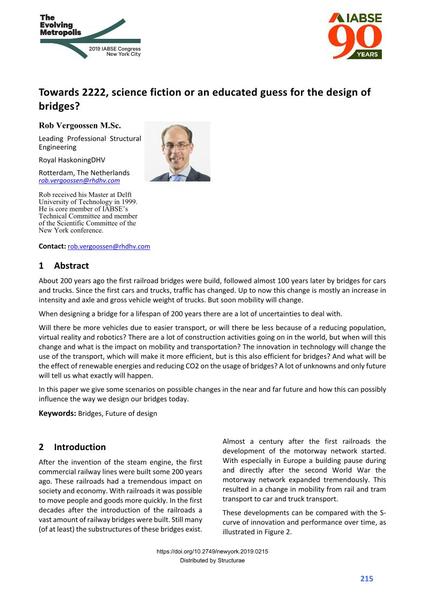Towards 2222, science fiction or an educated guess for the design of bridges?

|
|
|||||||||||
Bibliographic Details
| Author(s): |
Rob Vergoossen
(Royal HaskoningDHV)
|
||||
|---|---|---|---|---|---|
| Medium: | conference paper | ||||
| Language(s): | English | ||||
| Conference: | IABSE Congress: The Evolving Metropolis, New York, NY, USA, 4-6 September 2019 | ||||
| Published in: | The Evolving Metropolis | ||||
|
|||||
| Page(s): | 215-219 | ||||
| Total no. of pages: | 5 | ||||
| DOI: | 10.2749/newyork.2019.0215 | ||||
| Abstract: |
About 200 years ago the first railroad bridges were build, followed almost 100 years later by bridges for cars and trucks. Since the first cars and trucks, traffic has changed. Up to now this change is mostly an increase in intensity and axle and gross vehicle weight of trucks. But soon mobility will change. When designing a bridge for a lifespan of 200 years there are a lot of uncertainties to deal with. Will there be more vehicles due to easier transport, or will there be less because of a reducing population, virtual reality and robotics? There are a lot of construction activities going on in the world, but when will this change and what is the impact on mobility and transportation? The innovation in technology will change the use of the transport, which will make it more efficient, but is this also efficient for bridges? And what will be the effect of renewable energies and reducing CO2 on the usage of bridges? A lot of unknowns and only future will tell us what exactly will happen. In this paper we give some scenarios on possible changes in the near and far future and how this can possibly influence the way we design our bridges today. |
||||
| Keywords: |
bridges Future of design
|
||||
